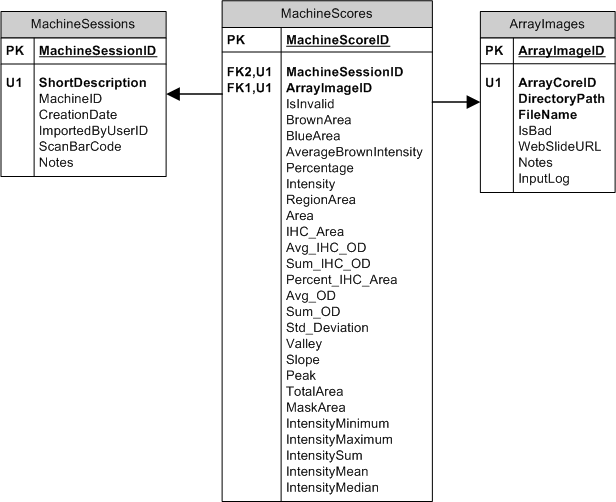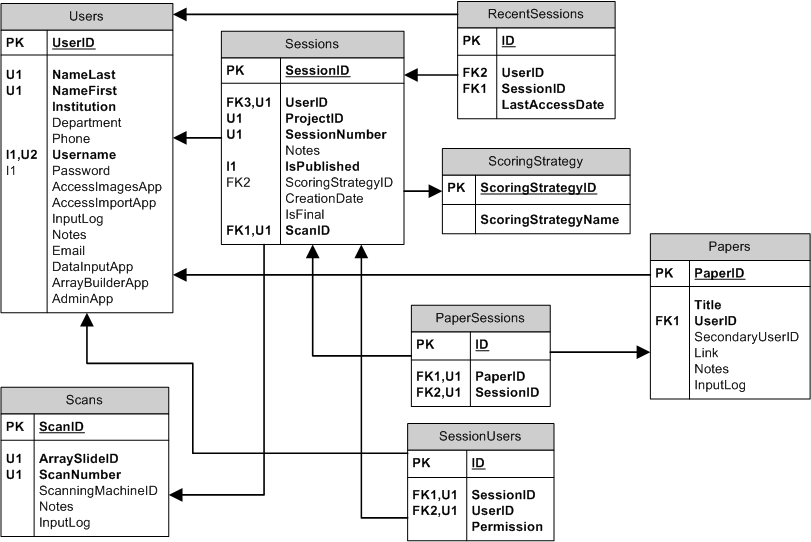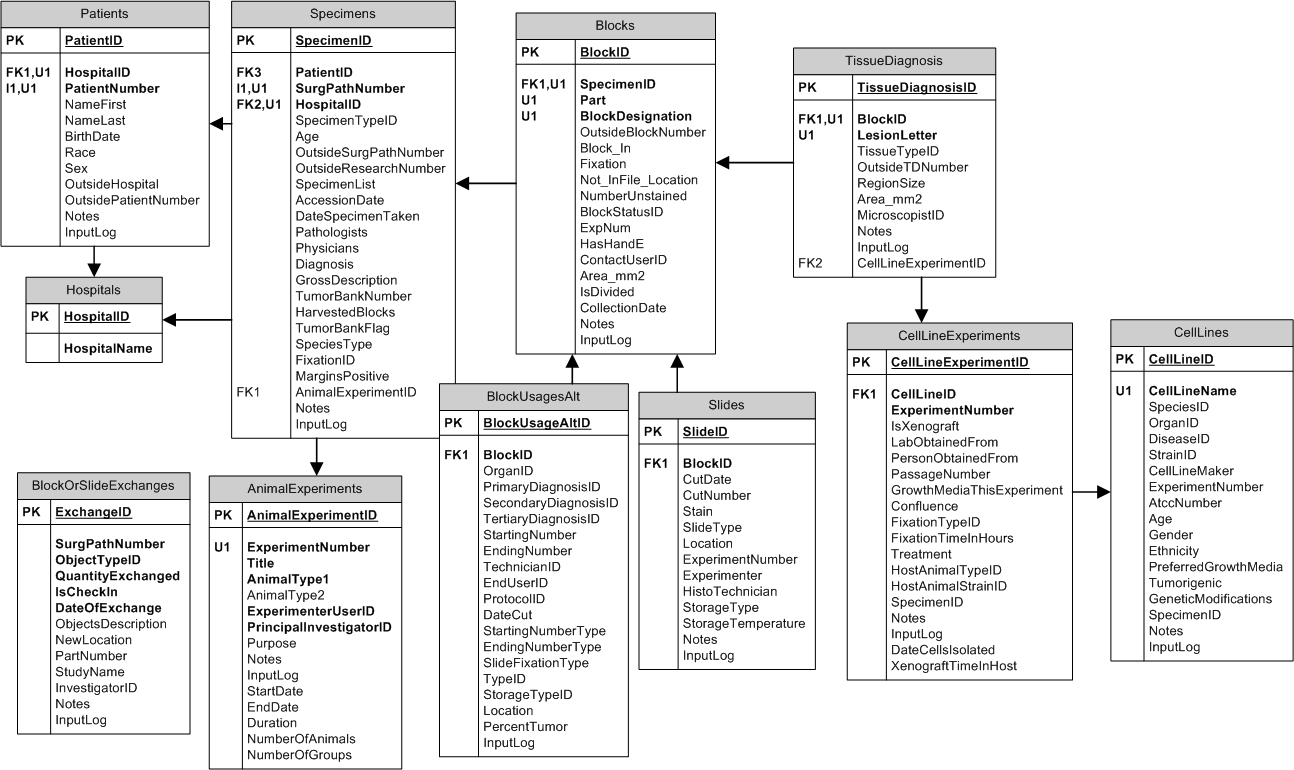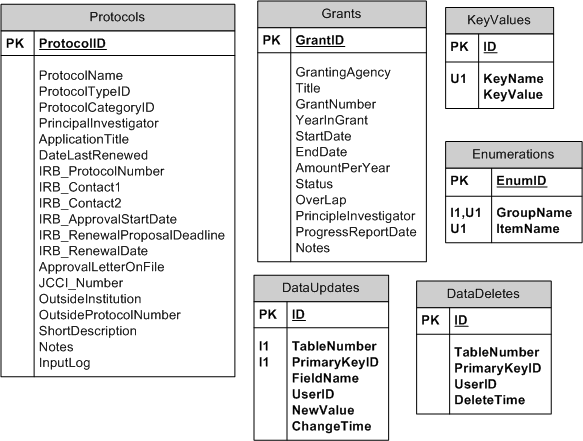
 |
| Schema
of the Machine-Scored Data related tables |
 |
| Schema
of Sessions-related tables |
 |
| The schema for Tissue-Related
Tables (Specimens, Blocks, Sub-Blocks) in TMAJ. |
 |
| Schema
of miscellaneous tables in TMAJ |
© Copyright 2009 | All Rights Reserved | The Johns Hopkins University